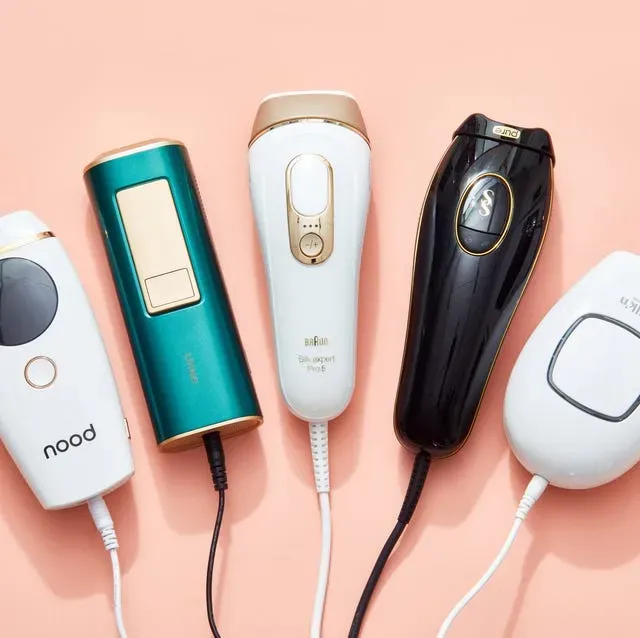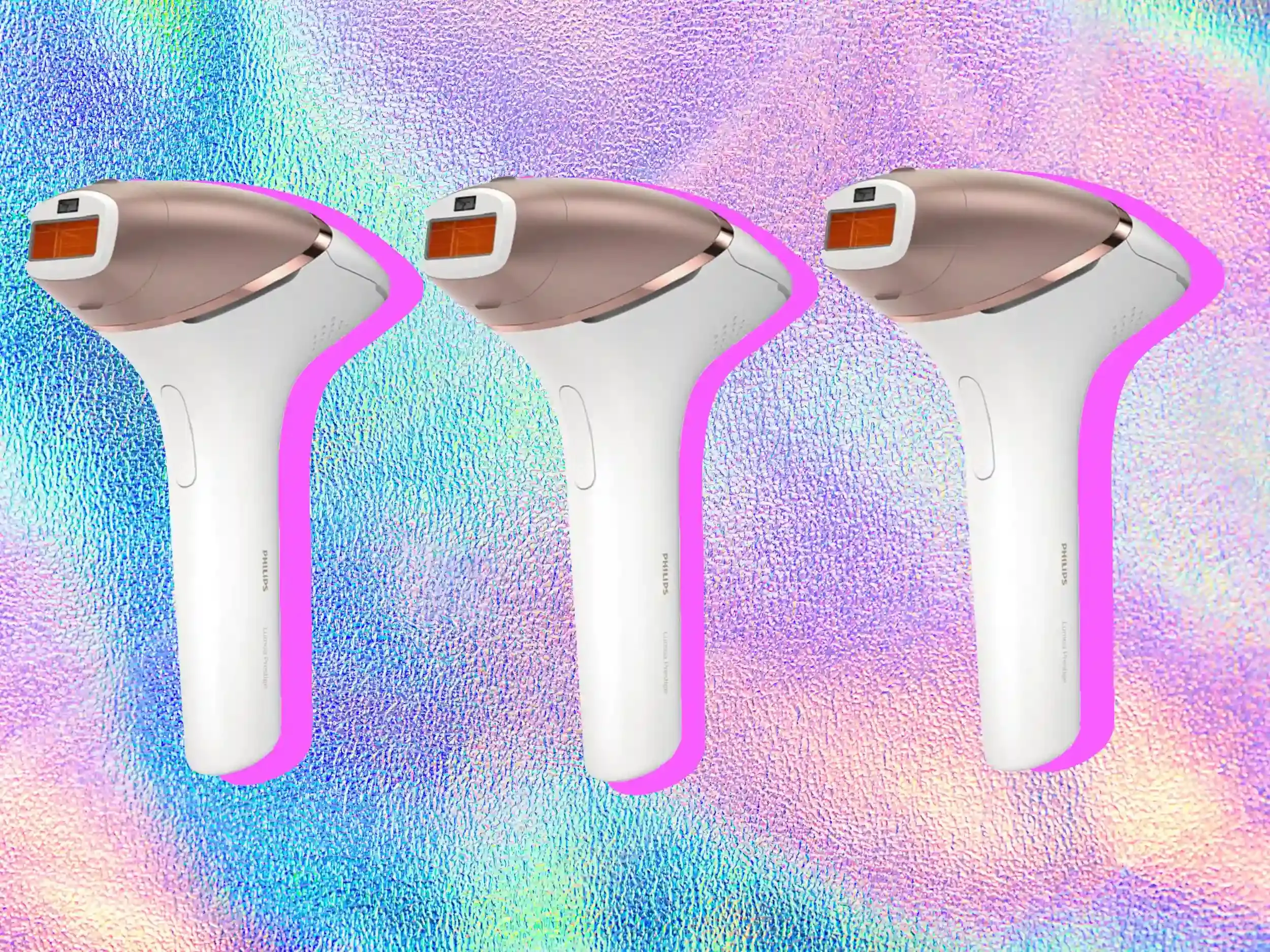Table of Contents
Let's be honest, the endless cycle of shaving nicks, painful waxing sessions, and questionable depilatory creams gets old, fast. You want smooth skin without the constant hassle, and maybe you've heard whispers about at-home devices that promise a longer-lasting escape from the fuzz. But stepping into the world of light-based hair removal can feel like navigating a minefield of jargon and conflicting claims. How do you even begin to figure out which device actually works?
IPL vs. Laser Hair Removal: Understanding the Technology

IPL vs. Laser Hair Removal: Understanding the Technology
Shedding Light on IPL
Alright, let's cut through the confusion. When people talk about "IPL laser hair removal," they're often lumping two slightly different things together, especially in the at-home market. IPL stands for Intense Pulsed Light. Think of it less like a precise laser beam and more like a camera flash. It zaps your skin with a broad spectrum of light wavelengths, kind of like a scattered shot.
This light energy gets absorbed by the melanin (pigment) in your hair follicle. When the melanin heats up, it damages the follicle, slowing down future hair growth. Because it uses a range of wavelengths, IPL can hit different depths in the skin. This makes it versatile, but also less targeted than a true laser. At-home devices almost always use IPL, not actual lasers, despite the marketing.
Breaking Down True Laser Hair Removal
Now, actual laser hair removal is different. Professional clinics typically use true lasers, like Diode, Alexandrite, or Nd:YAG lasers. These devices emit a single, focused wavelength of light. It's like a sniper's aim compared to IPL's shotgun blast.
This specific wavelength is highly targeted to the melanin in the hair follicle. This precision means they can often deliver more energy directly to the root, potentially leading to faster or more significant reduction in hair growth compared to home IPL devices. Because they are so focused, they also require more expertise to use safely, especially on different skin tones.
Feature | IPL (Intense Pulsed Light) | True Laser |
|---|---|---|
Light Type | Broad spectrum (multiple wavelengths) | Single, focused wavelength |
Targeting | Less precise, hits multiple depths | Highly precise, targets specific depth |
Energy Level | Generally lower (for safety) | Generally higher (professional use) |
Typical Use | At-home devices | Professional clinics |
What to Look for in the Best IPL Laser Hair Removal Devices

What to Look for in the Best IPL Laser Hair Removal Devices
Don't Get Fooled by Flash Counts Alone
so you're wading into the market for the best IPL laser hair removal device. The sheer number of options is overwhelming, right? One of the first things brands scream about is how many flashes the device has. Millions, they say! Sounds impressive, like it'll last forever. But here's the thing: a high flash count is only useful if the flashes are actually effective. You need enough power to damage the follicle, not just give it a little tickle. Look for devices that mention energy levels (often in joules) or intensity settings. More settings allow you to adjust based on the body area and your tolerance.
Also, consider where those flashes are going. A tiny treatment window means endless zapping for larger areas like legs. A bigger window speeds things up, but make sure it still has enough oomph behind each flash. Don't just buy the one with the biggest number on the box; dig a little deeper into the specs to see if it's actually designed to deliver results efficiently.
Cooling Features and Skin Tone Suitability
Another crucial factor when seeking the best IPL laser hair removal is comfort and safety, especially concerning your skin tone. IPL works by targeting melanin, which is also present in your skin. Devices need built-in safety features to prevent burns or discoloration, particularly on darker skin tones. Look for devices with integrated skin tone sensors. These sensors detect your skin tone and will prevent the device from flashing if it's not safe for you, automatically adjusting the intensity or blocking treatment altogether.
Many newer devices boast cooling features, ranging from cool-touch windows to active cooling plates. Trust me, this makes a difference. That little zap of heat can be uncomfortable, especially on sensitive areas. A good cooling system helps manage that sensation, making your treatment sessions far more bearable. It’s not just about comfort; it can also reduce the risk of heat-related skin reactions.
Thinking about buying one? Here are some questions to ask yourself:
- Is the device FDA-cleared? (A good sign of safety testing)
- Does it have a skin tone sensor?
- What is the energy level per flash? (Look for joules/cm²)
- How large is the treatment window?
- Does it have any cooling technology?
- Are replacement lamps available, or is the device sealed?
Putting the Best IPL Laser Hair Removal to the Test: Real Results and Expectations

Putting the Best IPL Laser Hair Removal to the Test: Real Results and Expectations
What Happens When You Start Zapping
you've done your research, picked one of the devices vying for the title of best IPL laser hair removal, and you're ready to get zapping. First off, manage those expectations. This isn't a one-and-done deal like ripping off a wax strip (thank goodness for that, right?). IPL works by catching hairs in their active growth phase, but not all your hairs are on the same schedule. You'll need consistent treatments over several weeks, typically weekly or bi-weekly for the initial phase, to catch enough hairs. People often start seeing a noticeable reduction in growth after about 4-6 treatments. The hairs that do grow back might be finer, lighter, and sparser. It's a gradual process, not an overnight transformation. Sticking to the schedule is key; skipping sessions means you're missing those crucial growth phases where the light can be most effective.
What should you actually *feel* during a session? Most users report a warm sensation or a light flicking feeling, sometimes described as a rubber band snap. Devices with good cooling technology significantly minimize this. If it's genuinely painful, stop and check your settings or consult the manual. Remember to shave the area just before treating – the light needs to target the pigment in the follicle below the skin, not the hair sitting on top (which will just burn and smell awful, trust me). And for the love of smooth skin, avoid tanning or heavy sun exposure during your treatment course. Melanin in tanned skin absorbs the light too, increasing the risk of burns and discoloration.
- Initial Treatment Schedule: Usually 1-2 times per week for 4-12 weeks.
- When to Expect Results: Noticeable reduction often seen after 4-6 treatments.
- Sensation During Treatment: Warmth, light flicking, or a rubber band snap.
- Key Prep: Shave the area immediately before treatment.
- Crucial Caution: Avoid sun exposure and tanning during treatment.
Safety, Skin Tones, and Making IPL Work for You

Safety, Skin Tones, and Making IPL Work for You
Why Skin Tone Matters Big Time
let's talk about the elephant in the room when it comes to the best IPL laser hair removal devices: skin tone. This isn't just a minor detail; it's critical for both effectiveness and safety. IPL works by targeting melanin, the pigment in your hair and skin. The more melanin in your skin, the higher the risk of absorbing too much light energy, which can lead to burns, blistering, hyperpigmentation (dark spots), or hypopigmentation (light spots). This is why IPL is generally most effective and safest on lighter skin tones with darker hair. It's like trying to shine a flashlight on a black surface versus a white one – the black surface absorbs more light.
Most reputable at-home IPL devices come equipped with a skin tone sensor for precisely this reason. This sensor is designed to read your skin's melanin level and will prevent the device from firing if your skin tone is too dark for safe treatment. Trying to use an IPL device on a skin tone it's not designed for is not only ineffective but genuinely risky. Always check the manufacturer's skin tone chart before buying and using a device. Don't try to game the system; your skin will lose.
Navigating Potential Side Effects
Even if you're the perfect candidate based on skin and hair color, it's wise to know what minor side effects might pop up when using even the best IPL laser hair removal systems. Immediately after a session, it's pretty common to see some slight redness around the treated follicles, maybe a little swelling, kind of like mild goosebumps. This usually calms down within a few hours. You might also feel a bit of a warm sensation, which is where those cooling features we talked about really earn their keep. Temporary changes in skin color, either slightly darker or lighter, can happen but are usually short-lived if you're using the device correctly and avoiding sun exposure. More serious side effects like burns or persistent pigment changes are rare, but they *can* happen if you ignore the safety guidelines, use the device on an inappropriate skin tone, or treat recently tanned skin.
Doing a patch test on a small, inconspicuous area of skin 24-48 hours before your first full treatment is non-negotiable. It’s the simplest way to see how your skin reacts. If you experience anything more than mild, temporary redness or warmth during the patch test, or during regular treatments, stop using the device. Listen to your skin; it's giving you important feedback.
- Common Minor Side Effects: Mild redness, slight swelling, warm sensation.
- Less Common/More Serious Side Effects: Burns, blisters, temporary or permanent pigment changes.
- Crucial Precaution: Always perform a patch test.
- Safety Rule: Never use on recently tanned skin or skin tones not recommended by the manufacturer.
Maximizing Your IPL Success
So you've got your device, you understand the safety bits, and you're ready to commit to the process. Making the best IPL laser hair removal work for *you* means consistency and proper technique. Stick to the recommended treatment schedule religiously during the initial phase. Missing sessions means missing hairs in their active growth cycle, slowing down your results. Shave right before each treatment – this ensures the light energy goes to the follicle, not wasted on surface hair. Clean and dry the area thoroughly. Don't apply lotions, oils, or self-tanner before treatment.
Once you've achieved your desired level of hair reduction, you'll likely need maintenance sessions. How often? It varies wildly from person to person. Some might need a touch-up every month or two, others only every six months. Pay attention to your regrowth and treat as needed. Remember that IPL reduces growth; it doesn't guarantee permanent removal of *every single hair*. Some stubborn stragglers might persist, and that's normal. For truly permanent hair removal solutions, exploring professional options like those found at hairawaybylaser.com might be the next step if you're looking for zero regrowth.
Making Your Choice in the IPL Jungle
Navigating the options for the best IPL laser hair removal means accepting that no at-home device is a magic wand for instant, permanent hairlessness. It requires consistency, patience, and understanding the nuances of the technology and your own skin and hair type. We've looked at what makes a device effective, the features that actually offer value, and the practical realities of using IPL at home. Ultimately, the "best" device for you is the one that fits your budget, suits your skin tone and hair color, and that you'll actually commit to using regularly. It’s not a one-time fix, but a tool that, used correctly, can significantly reduce the hassle of managing body hair.
